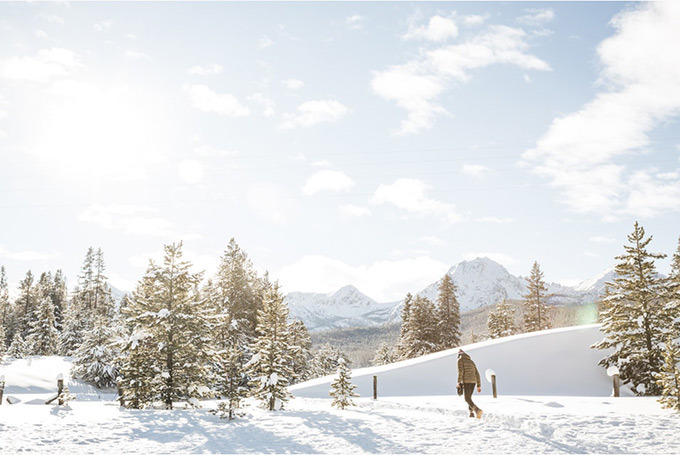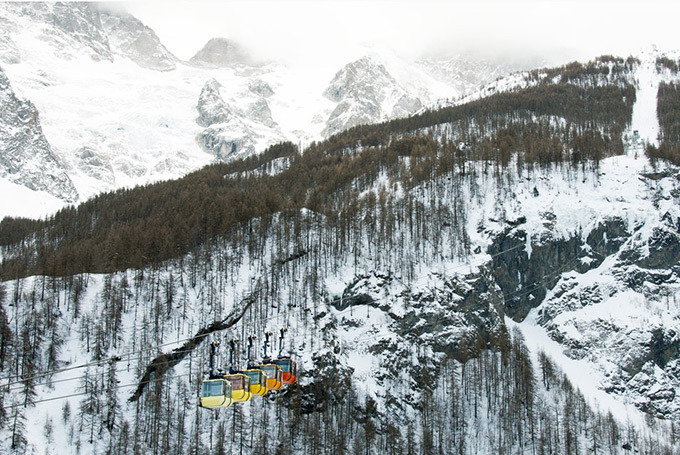Off The Beaten Path Winter Travel Destinations
In 1864, Johannes Badrutt, a hotelier in St. Moritz, Switzerland, placed a bet with some of his British guests that they would enjoy winter in the Alps just as much as they did summer. He told them that if they couldn't spend time outdoors in short-sleeve shirts during their stay in Engadin Valley, he would pay their expenses. Badrutt won the bet, and winter travel was born. And while Switzerland still is one of the top winter destinations, it's not alone. Here are five places worth braving the chill for.
From Summit to Seaweed: Sailboat skiing the Westfjords, Iceland
The Hornstrandir Nature Reserve is among the wildest places left in the North Atlantic. There are no roads. No electricity. No Wi-Fi. The last family to live there year-round departed in the 1950s, leaving the land to the Arctic foxes, seals, and millions of seabirds for much of the year. The best way to explore this windswept region where the sea meets vertical cliffs? By boat—and skis. Aurora Arktika, a family-owned and -operated guide service based in nearby Islafjordur leads six-day trips during which you sleep aboard one of the company's two expedition sailboats and spend your days climbing mountains and skiing down them. After a breakfast of salami, cheese, and hot coffee, grab your ski gear and take a Zodiac to shore, where you'll use your skis to climb a snowfield. At about 1,000 vertical feet, you'll top out to see the expanse of Iceland's remote Westfjords. Take in the view before dropping into a 40-degree slope of powder that leads all the way to the ocean. Haukur Sigurossonn, a 33-year-old guide for Aurora Arktika, calls it skiing from "summit to seaweed." At the end of the day, the boat awaits, along with fresh mussels and clam chowder. And if you're lucky, you'll dine beneath the aurora borealis.
Fright Night: Tschäggättä Festival, Lötschental Valley, Switzerland
For centuries, a lonely footpath was the only way in or out of Lotschental Valley, which lies in central Switzerland between the dramatic 13,000-foot peaks of the Bernese Alps and the Valais Alps. Today, you can drive on a two-lane paved road, which makes it a lot easier to experience the traditions of the "Magic Valley." The Tschaggatta Festival, held each year in early February, may be the most peculiar of these customs. During this carnival, residents don ghoulish hand-carved wooden masks and dress up in elaborately hairy costumes crafted from wool and leather. The outfits weigh up to 60 pounds, and those who wear them look like Yeti-Sasquatch-Chewbacca hybrids. After the sun drops behind the Alps, hundreds of these monsters lurch down the quiet, narrow valley, frightening locals and tourists alike. The origin of this custom is unclear, but locals suspect it goes back to the 1800s, when less fortunate farmers would disguise themselves under masks and heavy woolen robes to steal from neighbors. Today, it's a bit like Halloween, but instead of candy, the treats are gluhwein, beer, sausage, and cheese.
Have a Mountain to Yourself: Williams Peak Hut, Sawtooth Mountains, Idaho
Photo: Greta Rybus
There are two defining characteristics of Idaho's Sawtooth Mountains: They are pierced with steep gorges and they are hard to reach, especially during the winter, when deep snows all but seal them off. The best way to experience them is to book a couple of nights in a backcountry yurt. The Williams Peak Hut (two yurts side by side) was the first overnight shelter erected on the edge of the Sawtooth Wilderness. Crafted and maintained by Sawtooth Mountain Guides, the yurts sleep up to eight people each and come equipped with a wood stove, a propane kitchen, and a wood-fired sauna. The hut offers access to 41 named ski routes, for skiers of all skill levels. The area is a protected wilderness, which means there are no snowmobiles, and it's likely the only other people you'll see are your friendly yurtmates. Guided trips start at $300 per person per day for groups of eight to 12. Private rentals are also available.
Born from Ice: Ice Music Festival, Geilo, Norway
In the small village of Geilo, located at the foot of the mountains in central Norway's Hallingskarvet National Park, musicians carve harps, drums, horns, cellos, and other instruments out of their most abundant winter resource: ice. The Ice Music Festival, which takes place January 31 to February 4 this year, was conceived in 2006 by ice music pioneers Terje Isungset and Pal K Medhus. Every concert is different, because the sounds, often ethereal, depend on the composition and temperature of the ice and on the weather conditions. And while some instruments are preserved in freezers, most melt away after the show.
Steep Skiing in the Hautes Alpes: La Grave, France
Photo: Sean Parker
In June 2017, the telepherique (cableway) ski lift in the centuries-old village of La Grave, France, got a new lease on life, literally. Since 1987, the lift had carried skiers from the village in the French Alps upwards of 10,000 vertical feet to access some of the steepest and most dynamic off-piste ski terrain in the world. Despite the stunning backdrop of La Meije, a 13,068-foot glaciated massif right above town, La Grave never turned into a typical ski resort: Though there are modern amenities such as cafes and small inns, La Grave looks very much the way it has since the 12th century. But the skiers who did come brought vitality to the village. When the lease on the lift expired, locals feared they would have to sell out to a big developer to secure their livelihood. Luckily, a lift company from the nearby ski area Les Deux Alpes stepped in, and agreed to keep the telepherique running, without changing the character of the village in any substantial way. Which means you can still experience the quiet glory of La Grave⎯and what better time than now?
This article originally appeared on AFAR.


